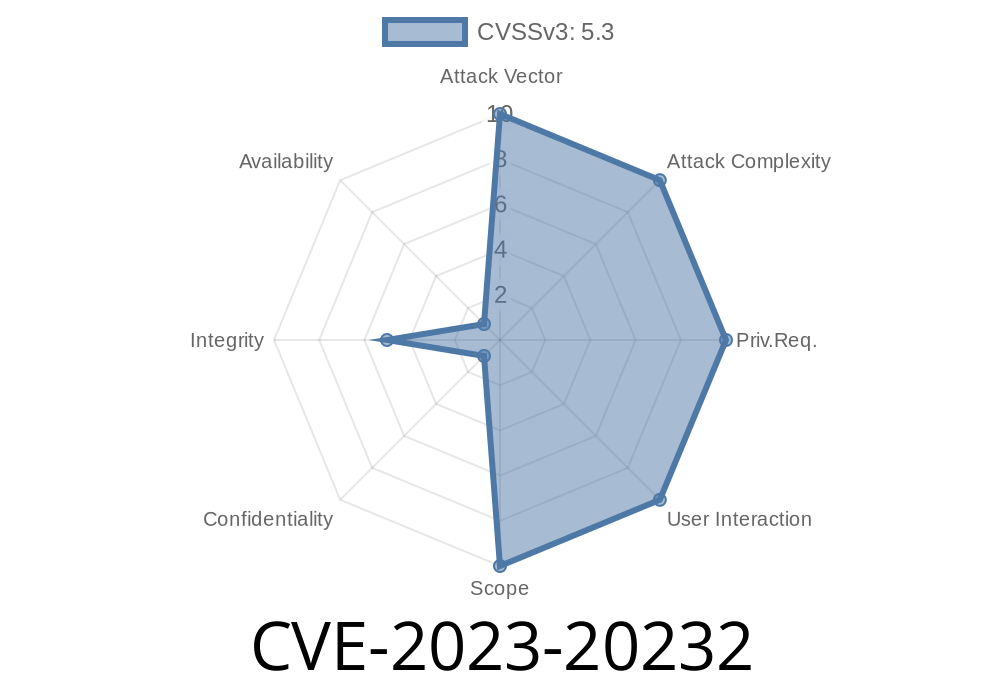In April 2023, a serious web cache poisoning vulnerability was reported in Cisco Unified Contact Center Express (Unified CCX), referenced as CVE-2023-20232. This vulnerability is rooted in how the Tomcat implementation in the Cisco CCX Finesse Portal processes certain HTTP requests.
This flaw could let an unauthenticated, remote attacker cause a web proxy to send users to a malicious, attacker-controlled website, leading to further phishing, credential theft, or malware infection.
In this article, we'll break down how this vulnerability works, provide code snippets to demonstrate the weakness, explain how an exploit could operate, and give you references for more details.
How Does CVE-2023-20232 Happen?
Background:
The vulnerability exists because the Tomcat webserver in Unified CCX’s Finesse Portal doesn’t properly validate inputs in certain HTTP headers when handling requests. Specifically, the web proxy logic can be manipulated to cache a response containing attacker-injected data.
What’s Web Cache Poisoning?
Web cache poisoning is a technique where an attacker tricks a caching proxy (like a load balancer or a CDN) into storing a malicious or manipulated response. When normal users access the cached content, they receive the attacker's data instead of the legitimate content.
1. Attacker sends crafted HTTP request
The attacker crafts an HTTP request targeting the Finesse Portal in Unified CCX. The trick is to inject a malicious Host header or a similar HTTP header that the Tomcat server doesn't properly validate.
2. Webproxy caches the malicious content
If the caching logic in the internal WebProxy incorrectly uses unvalidated data from the attacker-controlled header, it might cache a redirect to an attacker-controlled URL.
3. Victim accesses the affected resource
When another user visits the affected endpoint, the web proxy serves the poisoned (harmful) cache entry, leading the user to the attacker’s site.
Here’s what a malicious HTTP request might look like
GET /finesse/api/Resource HTTP/1.1
Host: victim-company.com
X-Forwarded-Host: attacker-site.com
Connection: keep-alive
Explanation:
X-Forwarded-Host is set to the attacker’s domain.
- If the proxy or application trusts (without validating) this header for internal redirects, it could forward users to the attacker site when a cached response is reused.
Proof-of-Concept Python Exploit
Here’s a basic script (for educational purposes ONLY!) that demonstrates how an attacker might send a crafted request:
import requests
target = 'https://ccx-finesse.company.com/finesse/api/Resource';
# Craft headers using an attacker-controlled host
headers = {
'Host': 'ccx-finesse.company.com',
'X-Forwarded-Host': 'evil-attacker.com'
}
response = requests.get(target, headers=headers, verify=False)
print(response.text)
Note:
If the vulnerability exists and caching is enabled, subsequent users may be redirected to evil-attacker.com when accessing Finesse Portal.
Phishing – Users can be redirected to fake login pages.
2. Session Hijacking – Stolen cookies/tokens if attacker controls destination.
Mitigation
If you're running Cisco Unified CCX, update immediately to the fixed version listed in Cisco's advisory.
References
- Cisco Security Advisory for CVE-2023-20232
- NIST NVD Entry for CVE-2023-20232
- OWASP: Web Cache Poisoning
Conclusion
CVE-2023-20232 is a critical web cache poisoning risk that affects Cisco's Unified CCX and could let attackers intercept or redirect users without authentication. To stay safe:
Timeline
Published on: 08/16/2023 22:15:00 UTC
Last modified on: 08/28/2023 16:00:00 UTC
